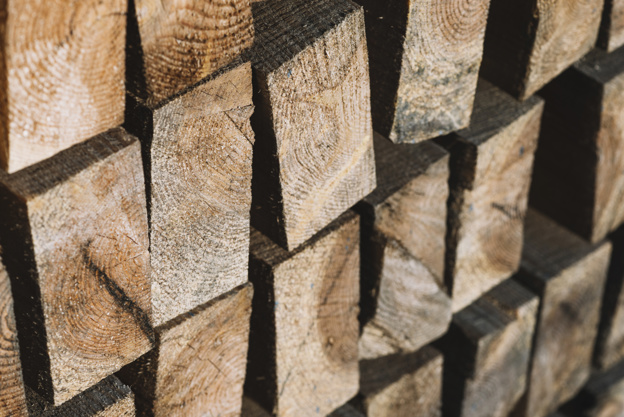Wood has been utilized as a building material for a huge number of years, being second just to stone as far as its rich and storied history in the realm of development. The compound properties of wood are characteristically mind boggling, yet even regardless of this test, people have effectively tackled the interesting qualities of wood to construct an apparently boundless assortment of structures. This incredibly adaptable material is generally used to manufacture houses, havens and pontoons, yet it is likewise broadly utilized as a part of the furniture and home stylistic layout industry too.
Maybe one of the greatest favorable circumstances of utilizing wood as a building material is that it is a characteristic asset, making it promptly accessible and monetarily achievable. It is surprisingly solid in connection to its weight, and it gives great protection from the chilly. Wood is very machinable, and can be manufactured into a wide range of shapes and sizes to fit for all intents and purposes any development require in Wood Works Factory Dubai. Wood is likewise the ideal case of an ecologically feasible item; it is biodegradable and sustainable, and conveys the most reduced carbon impression of any equivalent building material. What’s more, no high-vitality petroleum derivatives are required to deliver wood, not at all like other basic building materials, for example, block, steel or plastic.
Wood Or Timber?
The words “timber” and “timber” are frequently utilized conversely to allude to wood utilized as a part of development work, yet there has been significant level headed discussion as to which term ought to apply in a given situation. Bits of wood that are littler than 5 inches wide by 5 inches thick (paying little heed to length) are by and large alluded to as timber. Bits of wood more than 5 inches wide by 5 inches thick (paying little mind to length) are alluded to as timber, and any timber pieces that surpass 8″ wide by 8″ thick are alluded to as pillars. As timber pieces are bigger in measurement, they are regularly used to develop the casings of vast structures, for example, structures and extensions. Timber is additionally usually used in huge amounts for railroad ties, mine pole backings and cross beams on utility shafts.
Another kind of wood regularly utilized as a part of development is known as designed wood. As its name suggests, designed wood is the result of a more multifaceted manufacture process in which different wood strands, filaments, facade, or different types of wood are stuck together to shape a kind of composite material that is utilized for particular development applications. Regular cases of built wood incorporate plywood, stuck covered timber (a.k.a. “glulam”), arranged strand board, fiberboard, and molecule board. Built wood items are regularly utilized as a part of a wide assortment of private, business and mechanical development ventures.
Kinds Of Wood
Wood has generally been ordered into two essential classifications: Hardwood (any leaf-bearing tree) and softwood (any cone-bearing tree). Likewise with most other general characterizations, this can get fairly confounding because of the way that there are some leaf-bearing trees that can have moderately delicate wood, while some coniferous trees that can have rather hardwood. As a rule, in any case, hardwoods are all things considered thought to be heavier and more thick than softwoods. Hardwoods are normally utilized as a part of the development of dividers, roofs and floors, while softwoods are regularly used to make entryways, furniture and window outlines. A few cases of the most well known hardwoods incorporate oak, maple, mahogany, cherry, walnut, and teak. Generally utilized softwoods incorporate pine, hickory, shoreline, powder, birch, and cedar.
Wood Grades
The National Hardwood Lumber Association (NHLA) of America has made an evaluating framework to rate different kinds of timber, fundamentally in light of the measure of imperfections that can be found in a board. The following is a concise synopsis of NHLA grades for both hardwood and softwood blunder.
Advantages Of Wood In Construction
Wood conveys a few advantages that make it a phenomenal contender for use in a wide cluster of development ventures. One such advantage is its warm properties, which give it favorable position regarding its protection from high temperatures. Not at all like steel, which can extend or even crumple in high warmth, wood really dries out and winds up more grounded as the warmth increments. Likewise, the warmth conductivity of wood is generally low in contrast with different materials, for example, aluminum, marble, steel, or glass.
This gives wood leeway as far as being utilized as a part of different applications, for example, matches, equipment hardware handles, divider covers, and roofs. Wood additionally contains very looked for after acoustic properties. It can assimilate sound and echoes, and is a most loved material of decision for the development of structures where legitimate acoustics is critical, for example, show lobbies. Wood is impervious to electrical streams, making it an ideal material for electrical protection.
Another vital normal for wood is its elasticity, which is its capacity to twist under strain without breaking. Wood is particularly light in extent to its elasticity, settling on it the favored development decision for surfaces that take a steady beating, for example, ball courts and knocking down some pins paths. Elasticity is additionally one of the principle explanations behind picking timber as a building material; its astoundingly solid characteristics settle on it the ideal decision for substantial obligation building materials, for example, basic shafts.





